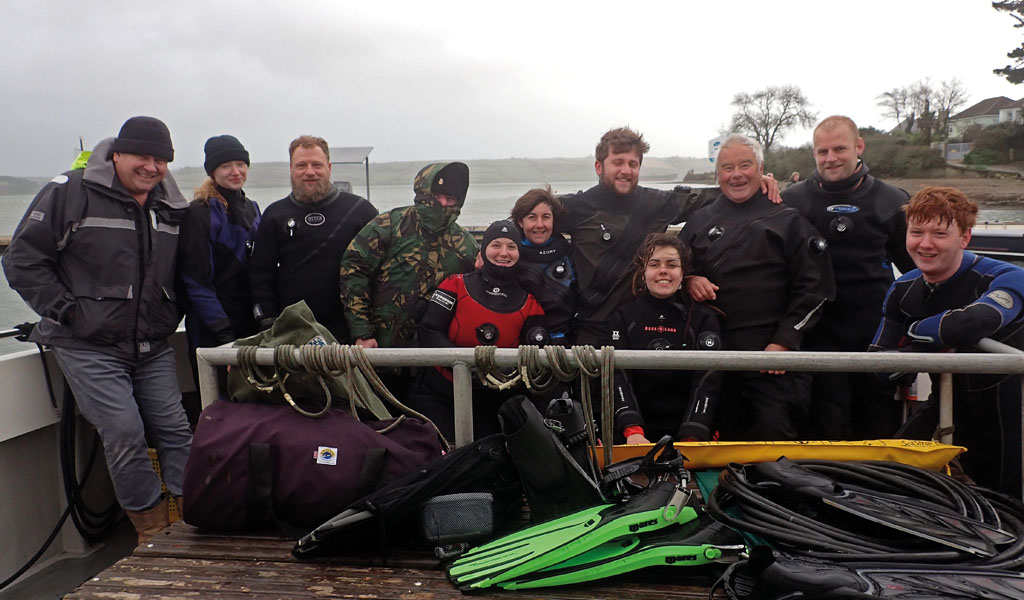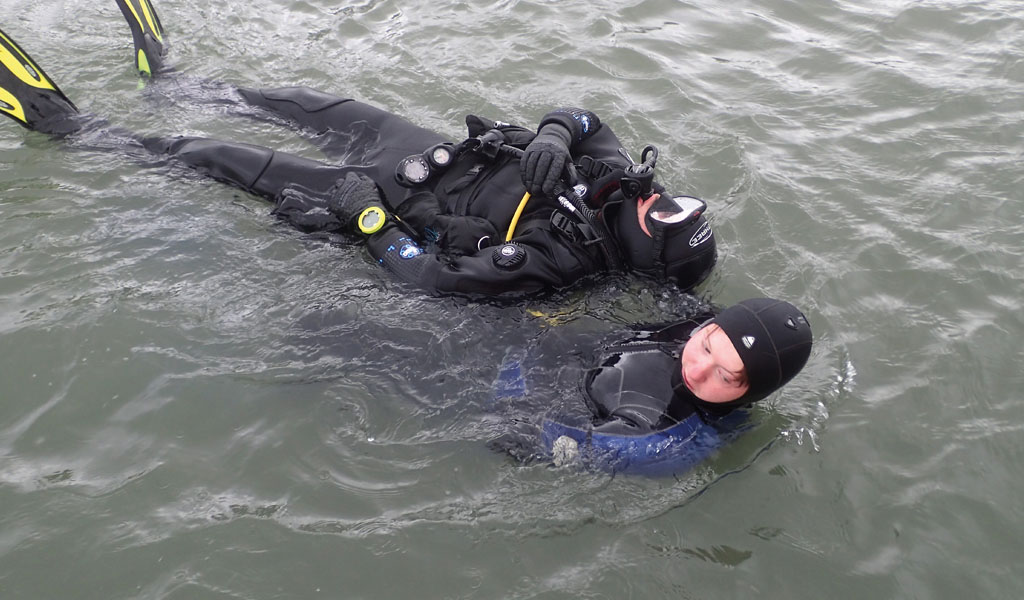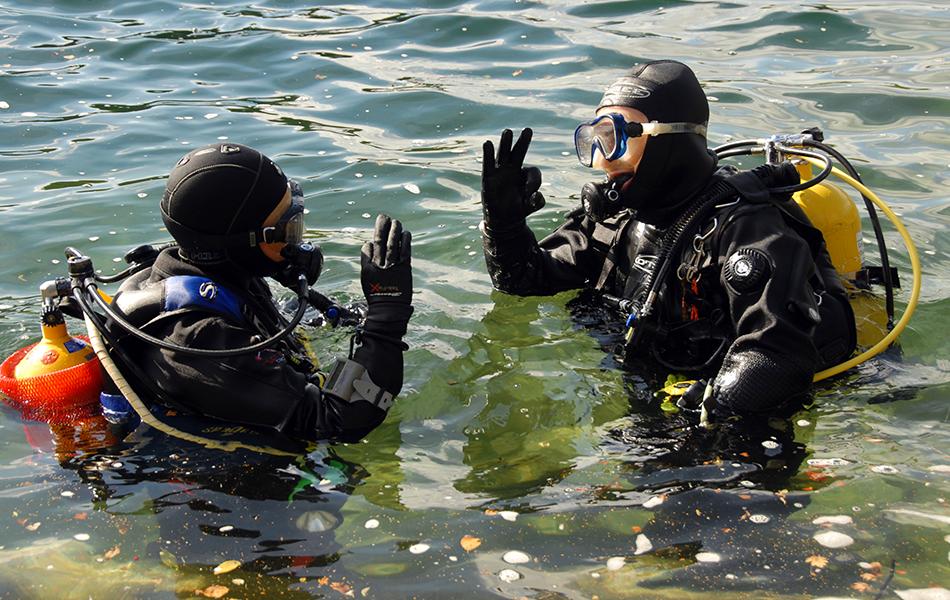
Pre-lockdown, Seaways Dive Centre Instructor John Adams took us through BSAC's popular Practical Rescue Management course and what students can expect.
I always like to get a mixed team of instructors together for a Practical Rescue Management (PRM) course, so that their combined experience can help the participants to concentrate on the important bits. This February, I gathered four instructors and a local experienced dive boat skipper, Nigel Hodge of Cornish Fishing and Diving, for an event.
The assembled instructors used their personal experience to give a strong sense of realism to the classroom lectures at Seaways Dive Centre (in Penryn, Cornwall). Then we found ourselves doing the practical exercises in Mylor Yacht Harbour in the middle of recent storm Ciara. The conditions were too rough to put to sea, so we kept the boat tied up and used the pontoons for the initial rope throwing and recovery from water skills.
We continued with two demonstrations onboard the boat, given by the instructor team. The boat has two options for boarding casualties: a door where the freeboard is around a metre from the waterline; and a diver lift, a common sight now on dive boats around our coasts. The first demo was in slow motion with a commentary on the actions team members were taking, together with the Rescue Manager’s reasoning. This was followed by a demo in real time to inject a sense of urgency. This is when we started to involve the students (without warning them), which helped them to get over any shyness.
After that, everyone took turns at being the Dive Manager, using others on the boat as their team. The message we drove home throughout was to use the same basic process to guide the actions taken. This is where the reality sets in and we debriefed each session as constructively as possible, using that as the starting point for the next exercise.
As the exercises went on, the reality and difficulties of a rescue situation became apparent to everyone. You have to have someone to: keep the skipper informed; make sure that any rescue swimmer is safely equipped before dispatching them; look after other divers in the water; prepare the oxygen kit; ride the diver lift down to support the casualty; be ready to help drag the casualty off the lift; keep the airway open; de-kit the casualty; start a casualty assessment; all while clearing the decks of clutter and delivering cardiopulmonary resuscitation.

The big questions
We asked the students:
- How many people were actually involved in making each rescue process quick and efficient and giving it a reasonable chance of success?
- How easy would it really be to kit up a rescue swimmer before putting them in the water? Have they got their suit on and is it zipped up? Do they know where their fins are?
- In reality, when on a hard boat, how do divers organise their diving? All of the course participants (apart from the military club members) said that they all dive in one wave; no one remains on board.
- If, as on many charter boats, there is only the skipper, or maybe one additional member of crew left on board, what would you expect the outcome to be if someone needs rescuing?
The uncomfortable answers
The conclusions were fairly obvious to everyone:
- It is safer if we dive in teams so that there is always a Dive Manager, Rescue Manager and some helpers on board. The skipper may not like you diving in two separate groups, but this is not a popularity contest.
- Who is qualified to give oxygen first aid? Is there at least one capable person left on the surface? Who is going to be Rescue Manager when you are in the water?
- Once you get a casualty out of the water, where are you going to put them? Is this space kept clear throughout the day?
- When you first get on a hard boat, look around for how you would get a diver out of the water in an emergency. Is there a handy rope or mooring line you can use as a sling? Will you use the door or how does the diver lift work? Ask the skipper during the boat briefing, as they will probably be helming the boat when a problem occurs.
- If diving from a RIB, there will be fewer people on the surface and the Cox’n may have to perform many of the roles, but the actions remain the same.
- It’s a good idea for participants to do the Oxygen Administration course before the PRM course so that they have the skills to be a more involved team member. If possible, it’s a good idea to run the course using the type of boats and facilities that you usually dive from. Many clubs run an annual PRM course so that their members are well prepared for most eventualities.
Practical Rescue Management training
Find out more about the Practical Rescue Management course or find a course near you.
This Learning Curve article was originally published in SCUBA magazine, Issue 102 May 2020.
Images in this online version may have been substituted from the original images in SCUBA magazine due to usage rights.




